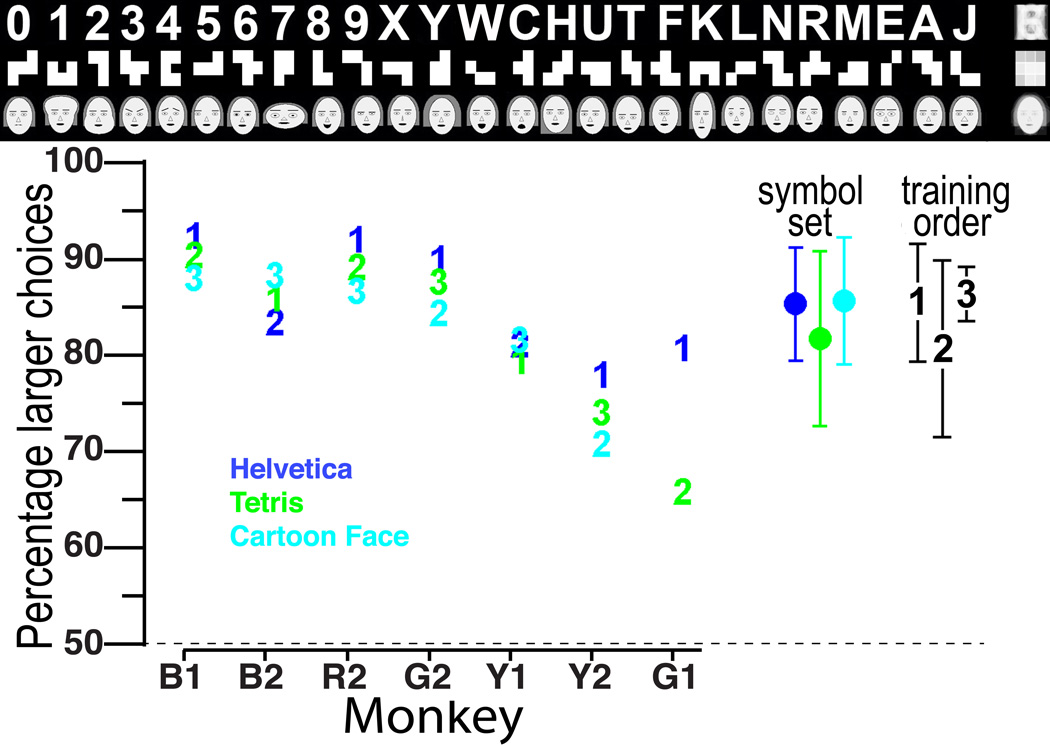Fig. 1.
Symbol set learning: (top) The 3 different symbol sets: Helvetica, Tetris, and Cartoon face. Each symbol in each set represents, in order, 0 to 25 drops of liquid reward. At the far right of each symbol set is an image average of all the symbols in each set. (bottom) Percent larger choices averaged over 1 month of daily testing for each monkey (horizontal axis) for each symbol set (indicated by color); chance = 50%. Numerals 1–3 indicate the order in which the 3 symbol sets were learned by each monkey. To the right are shown the % larger choices±sem for each symbol set averaged over all monkeys who learned each set, and the average % larger choices±sem for the first, second, and third learned sets. We found a negative correlation between the size of each symbol set patch and each monkey’s performance on that symbol set, but this correlation was not significant [Pearson’s Linear correlation coefficient r= −0.3828; p = 0.1057]. We found no correlation between the average significance value of a particular patch and the monkey’s performance [Pearson’s Linear correlation coefficient r= 0.0196; p = 0.9366)].

